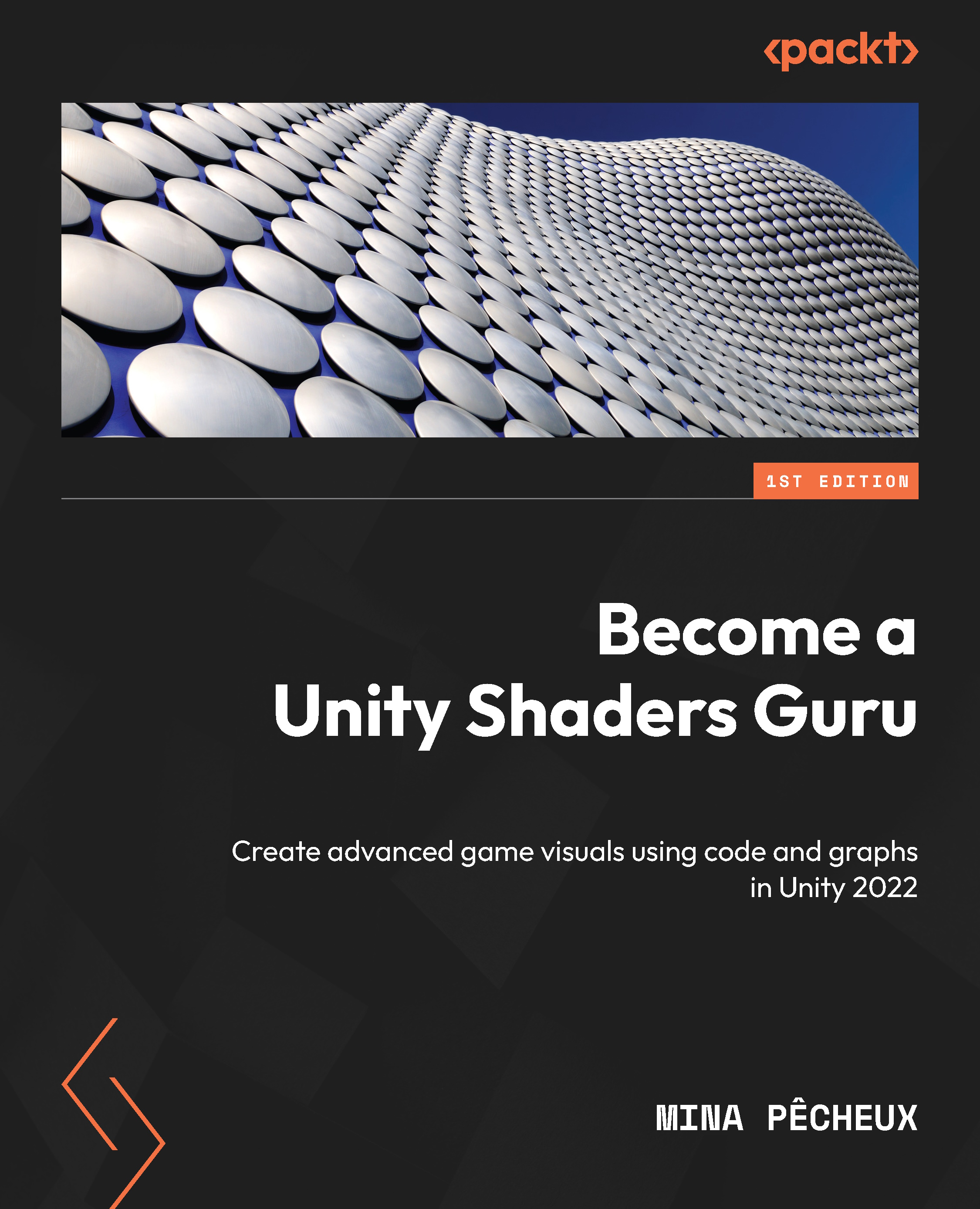Using the built-in render pipeline
Up until now, we have looked at Unity’s built-in or legacy render pipeline. This was a good way to learn how to make shaders in this game engine. However, this pipeline also has its share of limitations.
So, in this first section, let’s discuss the advantages and drawbacks of this pipeline, as well as how we can extend it, thanks to CommandBuffers.
A handy but limited pipeline
The built-in pipeline has several advantages:
- The most obvious plus is that it is readily available as soon as you create a new Unity project with a basic template. It lets you get familiar with the whole toolchain of shaders, materials, and mesh renderers.
- Since it’s been around for a long time, the built-in render pipeline is also compatible with a large number of pre-existing shaders, VFX, third-party tools, and learning resources.
- Of course, because it is a general-purpose render pipeline, it handles most of the common use cases...



























































